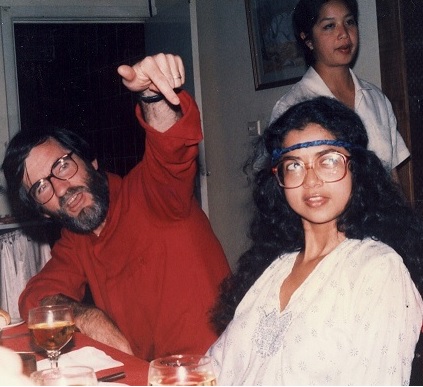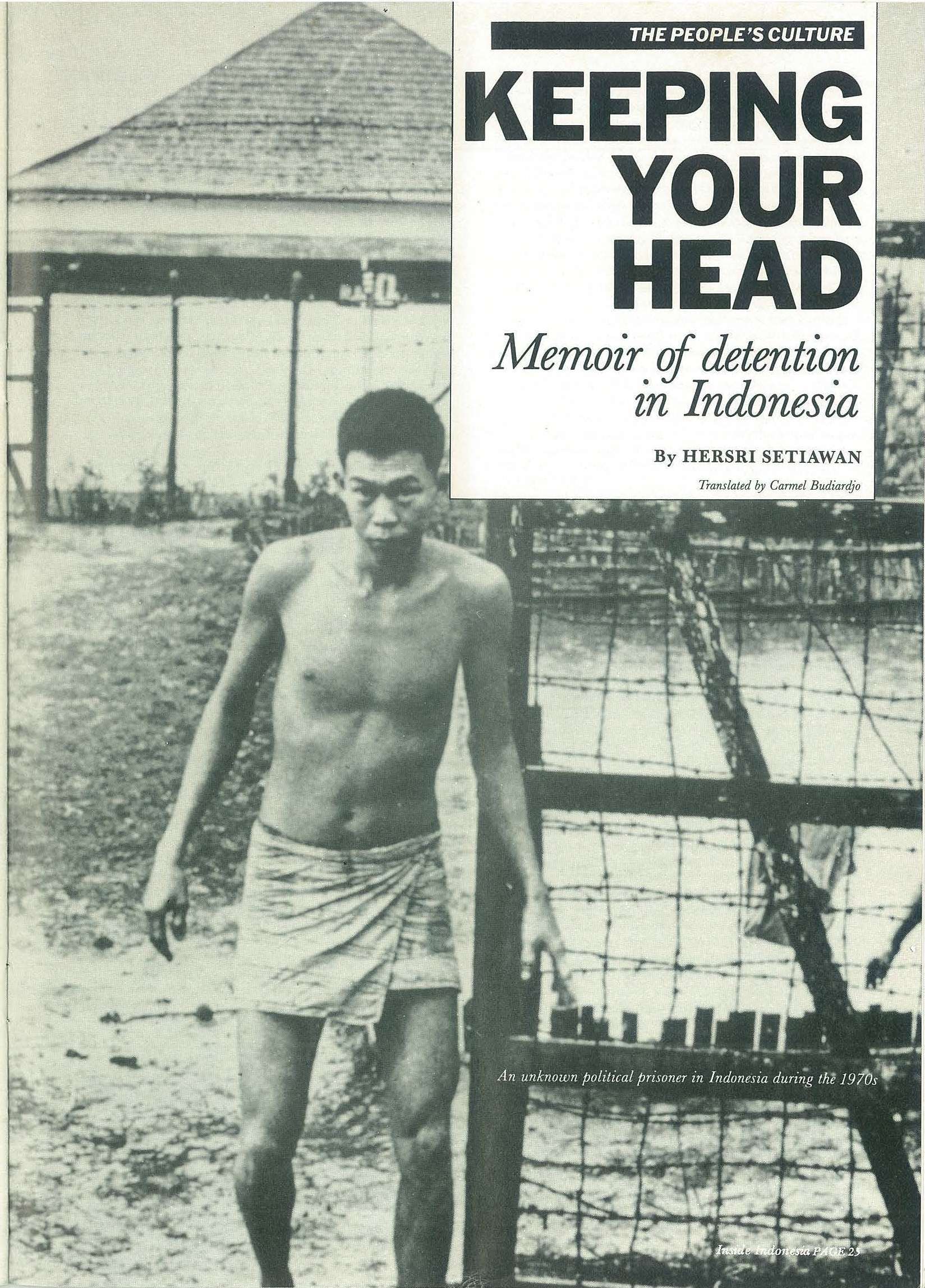A former volunteer shares his memories of the first five years of Inside Indonesia
David Hill
An image from an article from Inside Indonesia, edition 3 October 1984
In the harsh world of ‘little magazine’ publishing, it is nothing short of a miracle that Inside Indonesia has just turned 30. When I look at this feisty online periodical, which is older now than I was when it started, I am amazed it has not just survived the odds, but blossomed. I am even more in awe of the parade of talented individuals who have committed the time and effort into publishing it regularly over the decades.
As John Waddingham and Pat Walsh – two of the core workers for the first decade – have described elsewhere, it was a shaky start. My recollections, not based on the detailed archives accessed by John, are hazy. But many evocative memories remain.
A challenge to be taken seriously
One is of an early pre-publication meeting upstairs above a pizza shop or some such establishment in Fitzroy, Melbourne. John Waddingham pulled out of a cardboard box an array of dozens of short-lived publications about Indonesia or East Timor, which failed to find a market or the committed volunteers needed, and so disappeared without a trace.
The lesson was clear. If this new venture was to survive it would be a long hard road, and precedent was against us. I recall John underlining the challenge by concluding, ‘if we’re not serious about keeping it going for the long term, then it’s not worth the effort of starting’. It was a warning that rang in my ears each time an Inside Indonesia task came up.
Working as a team
There were lots of solo chores but the fun was in the collective toil. The activity I remember with most affection was the bonhomie of the mail-out sessions. We’d all gather in the old Fitzroy church hall that was home to Inside Indonesia’s ramshackled offices. We’d examine the freshly printed magazine and work our way through the slowly growing list of subscribers, attaching address labels to brown envelopes and slipping the magazine inside. There was lots of chatter and self-congratulation at how good the issue looked – yet also thoughtful self-criticism and ideas to improve the next one.
We had to pre-sort all of the envelopes into postal districts to get an Australia Post magazine discount. If all went well, by the end of the evening, we’d have neatly stacked boxes of magazines ready for despatch. But would we have the money to pay for it?
Subscribers and writers
Finances were always a struggle. Our subscriber list was growing only slowly, and the costs of production continued to outweigh revenue. We were always thinking of new ways to promote and sell the magazine. No Indonesia-related event escaped an Inside Indonesia sales table with hand-written signs and special discounts on past issues. Postgraduates were common work-horses as we lugged boxes of back issues and subscription forms to activities around Melbourne.
One of the challenges was to encourage established academic colleagues to write for this little magazine which targeted a non-specialist readership. Initially, many cautiously waited to assess its editorial line and determine whether it was worth supporting. Before long, we were proud to have enticed articles from the likes of Ben Anderson, Richard Robison, Harold Crouch, Keith Foulcher and others.
Memorable content
Much of the political struggle in those years was grim and determined. The Suharto regime was firmly ensconced. Little in-depth material on Indonesia appeared in the mainstream Australian media. We saw Inside Indonesia as part of a broader solidarity with democratic forces – and friends -- in Indonesia.
Personally, as I flick back through Inside Indonesia’s first five years, several items are noteworthy. Shirley Fenton-Huie’s account of her visit to the women’s detention camp of Plantungan one Christmas opened up a little-known window onto the conditions of women political prisoners. It followed a short story by a former political prisoner and member of the women’s organisation Gerwani. Hersri’s earlier memoirs of his prison experience were similarly confronting.
 Pat Walsh and Krishna Sen Christine Wheeler
Pat Walsh and Krishna Sen Christine Wheeler
The publication in Issue No.14 of the short memoir ‘Despised delight’, by an unnamed ‘wife of an ex-tapol’ about their daughter, proved the first of a series of such touching accounts. So popular was it that when we discovered the author was working on an extended manuscript, her instalments became a regular feature of the magazine. In 1991 Ruth Havelaar’s poignant memoirs were published posthumously by Monash University as a monograph, Quartering: The story of a marriage in Indonesia during the Eighties, and later appeared in Indonesian and Dutch.
Inside Indonesia had a knack for identifying emerging issues, and drawing attention to them. In those early years, amongst the prescient was Rossi von der Borch’s feature on the emerging street poets Omi Intan Naomi and Wiji Thukul. Wiji became celebrated as one of the boldest creative voices of the anti-Suharto movement. He was to be not only harassed and brutally beaten, but ultimately ‘disappeared’: a crime for which no-one has yet been called to account.
While the Suharto regime may have faded, many recurring issues from Inside Indonesia in the 1980s remain equally as pertinent for today’s magazine, including human rights conditions in (West) Papua, industrial labour rights and Indonesia’ environmental challenges.
Warm memories
As I reflect upon those first five years, it was the camaraderie that kept volunteers involved. When Krishna Sen and I moved to Perth in 1988, our farewell gift from the informal Inside Indonesia collective on 9 June was a green hard-bound set of the first 14 issues of the magazine from November 1983 to April 1988.
Its frontispiece bears the signatures of Pat Walsh, Max Lane, Chris Dureau, David Bourchier, Annie Keogh, Tony and Neva Finch, John Paterson and Kristy Sword (after which she has written ‘alias Christina Blade’). Some years later, ‘Christina’ was to become ‘Ruby’, Suharto was to step aside, East Timor was to become independent. And (as they say) the rest is history!
David Hill (dthill@murdoch.edu.au ) is Professor of Southeast Asian Studies, Murdoch University, Perth.












